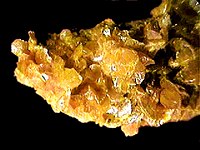
Antiferroelectric titanium-doped zirconia thin films deposited via HiPIMS for highly efficient electrocaloric applications
Sign Up to like & getrecommendations! Published in 2021 at "Journal of The European Ceramic Society"
DOI: 10.1016/j.jeurceramsoc.2020.12.041
Abstract: Abstract In this study, the antiferroelectric (AFE) and electrocaloric (EC) characteristics of lead-free titanium (Ti)-doped zirconia (ZrO2) thin films deposited via high-power impulse magnetron sputtering (HiPIMS) were investigated. The argon-to-oxygen ratio was initially optimized during… read more here.
Keywords: titanium doped; thin films; deposited via; doped zirconia ... See more keywords

The Effect of Solvent on Al-doped ZnO Thin Films Deposited via Aerosol Assisted CVD
Sign Up to like & getrecommendations! Published in 2018 at "RSC Advances"
DOI: 10.1039/c8ra06417b
Abstract: Aluminium-doped zinc oxide (AZO) thin films were deposited via aerosol assisted chemical vapour deposition (AACVD) from zinc acetylacetonate and aluminium chloride at 450 °C. The precursor solutions consisted of methanol in a mixture with one… read more here.
Keywords: thin films; via aerosol; deposited via; aerosol assisted ... See more keywords

Enhanced Electrical Properties of Copper Nitride Films Deposited via High Power Impulse Magnetron Sputtering
Sign Up to like & getrecommendations! Published in 2022 at "Nanomaterials"
DOI: 10.3390/nano12162814
Abstract: High Power Impulse Magnetron Sputtering (HiPIMS) has generated a great deal of interest by offering significant advantages such as high target ionization rate, high plasma density, and the smooth surface of the sputtered films. This… read more here.
Keywords: films deposited; deposition; magnetron sputtering; high power ... See more keywords

Copper-Arsenic-Sulfide Thin-Films from Local Raw Materials Deposited via RF Co-Sputtering for Photovoltaics
Sign Up to like & getrecommendations! Published in 2022 at "Nanomaterials"
DOI: 10.3390/nano12193268
Abstract: The inexorable increase of energy demand and the efficiency bottleneck of monocrystalline silicon solar cell technology is promoting the research and development of alternative photovoltaic materials. Copper-arsenic-sulfide (CAS) compounds are still rather unexplored in the… read more here.
Keywords: bandgap; thin films; arsenic sulfide; deposited via ... See more keywords